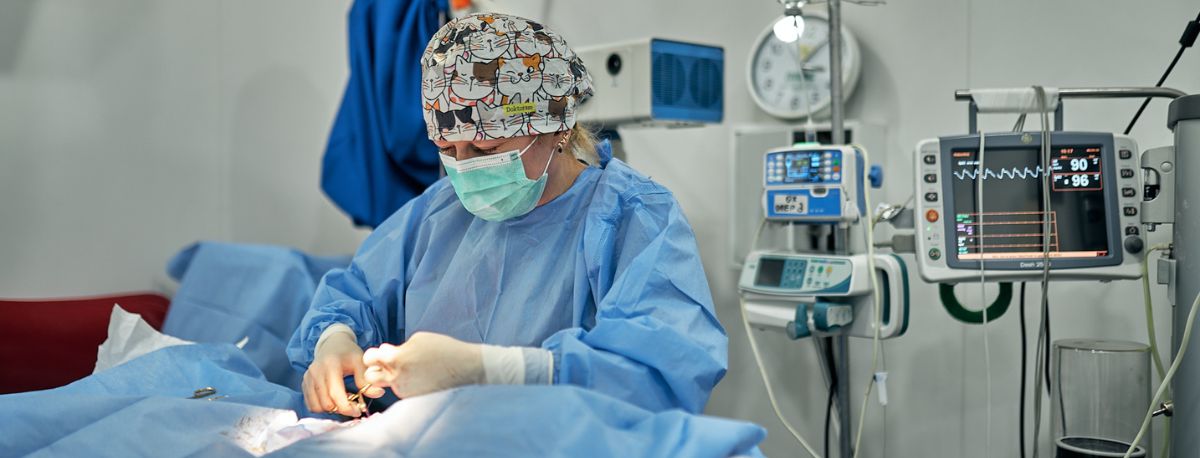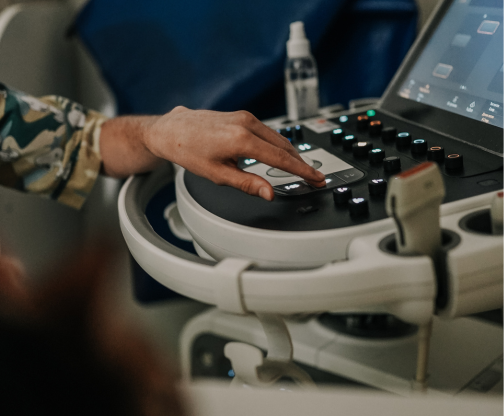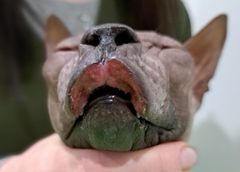Common myths about castration.
Опубліковано
21.02.2024
Поширені міфи про кастрацію.
Today, the most common surgery in veterinary clinics is castration of males and females. This is a planned operation that is performed on clinically healthy animals and has minimal anesthetic risks, is well tolerated and has a good and quick recovery.
It is castration, not sterilization. These concepts are often confused by pet owners.
Sterilization is a surgical method of preventing pregnancy. In males, the spermatic cords are tied, and in females, the fallopian tubes are tied or crossed. That is, the genitals remain, but the animal is not capable of reproduction.
Castration is the artificial removal of the reproductive organs of the testes in males, ovaries and uterus in females.
In the Zoolux clinic, castration is performed because it prevents the development of hormonal disorders and prevents the development of neoplasia (tumors) and inflammatory and bacterial diseases of the genital organs (prostatitis, orchitis in males, pyometra, mucometra, endometritis in females).
Let's take a closer look at cat castration - ovariohysterectomy.
In our clinic, we perform this operation on clinically healthy animals from 3 months of age.
- It is proved that it is desirable for cats to have the ovaries and uterus removed before puberty, which minimizes up to 95% of the occurrence of mammary and genital neoplasms.
- Surgical intervention can be performed on the same day as the scheduled vaccination of the animal, it will not be an additional burden on the body.
- Before the surgery, the animal must be fasted for 4 hours.
- If necessary, on the day of surgery, general and biochemical blood tests and an echo of the heart can be performed.
- Our clinic keeps up with the times, so we have modern equipment and can offer endoscopic castration.
- The technique of this operation is minimally invasive (minimal surgical intervention and trauma).
- Single-port laparoscopic-assisted ovariohysterectomy (removal of the ovaries and uterus) is indicated for clinically healthy cats, has minimal anesthetic and surgical risks, and quick rehabilitation and recovery.
Surgical technique:
- The skin and abdominal wall are punctured with a special port, which is a metal tube with a diameter of 0.5 cm and a hook at the end.
- An endoscopic camera is inserted into the port and connected to a laptop or smartphone. An examination of the abdominal organs (liver, gallbladder, spleen, kidneys, bladder) is performed, which allows to detect pathologies or their absence in advance. The uterus is visualized, its horn is hooked by a hook built into the port and brought out.
- Then the vessels are coagulated with a thermal cauterizer and the uterine horns are removed.
- No foreign bodies (ligatures on the vessels) remain in the abdominal cavity, which facilitates and accelerates wound healing and reduces the risk of inflammatory reactions in the postoperative period.
- Self-absorbable suture material is applied to the abdominal wall, and the skin is joined with medical glue.
- As a result of this operation, the animal has a small puncture instead of an incision during castration without the use of endoscopic equipment.
Postoperative care is minimal: treat the skin once a day with a 2% Chlorhexidine solution and protect the surgical site from licking and contamination by wearing a protective blanket if necessary.
After the surgery, we will call you and tell you when you can pick up your pet. Usually, this is 2 hours after the surgery, so that the cat wakes up under the supervision of an anesthesiologist and the epidural anesthesia wears off.
Common myths about castration:
1. Castration = sterilization
In fact, this is not true. Both operations are aimed at depriving an animal of the ability to give birth, but they are not the same thing.
Castration is the removal of the uterus and/or ovaries. Without preserving the gonads.
Sterilization is the ligation of the fallopian tubes, without removing the uterus. With the preservation of the gonads.
2. It is necessary to let the animal feel the "happiness of motherhood"
This is the most widespread myth. No, an animal does not need to give birth, and it will not experience the "joy of motherhood". On the contrary, if you neuter an animal before full puberty, you can avoid many health problems.
3. Why castrate if you can give drugs?
Hormonal drugs suppress the sexual cycles of pets, but require a course of use, which contributes to the development of various diseases, especially malignant tumors and inflammatory processes of the uterus.
4. I don't want to castrate, it's unnatural.
This is a very outdated acceptance of reality, because castration in the modern world is a necessity. Because not all owners want to look for a home and good hands for kittens, throw them out on the street, or even worse, get rid of them. Therefore, to help reduce the number of stray animals, you should neuter your pet if you do not plan to engage in professional breeding.
Схожі статті

Preparation for ultrasound examination (ultrasound)
It is important to remember that proper preparation of the animal can significantly facilitate the abdominal ultrasound process. By performing this procedure, the doctor can detect possible problems in time and provide proper treatment. High-tech ultrasound is one of the ways to quickly and informatively diagnose and ensure a long and healthy life for our pets.

Brachycephalic syndrome in dogs and cats.
What exactly is brachycephalic syndrome and how to live with it, how to prevent complications for the body that this syndrome can lead to?

WHY ARE DOCTORS NOT ALL-POWERFUL?
A good doctor is worth its weight in gold. Everyone understands this and can spend years looking for the best one, and when they find one, they will expect miracles.

Allergy
Allergy

SYNDROME OF TIRED TANKLES IN CATS
Tired antennae of a cat or What do you know about fatigue?

Bacterial myocarditis
This disease is extremely rare in dogs. In cats, it is even less common - 0.006-0.018% of cases.

How to protect home lovers from radiation damage.
In recent days, we have received many calls asking for advice on the need to protect animals during a possible radiation exposure.

STERILIZATION AND CASTRATION OF CATS AND DOGS
Such operations do not affect the change of the animal's character. They can be done from an early age, in particular from 8 weeks. Convenience, first of all for the animal, is that the young organism has the ability

Side effects of antiparasitic drugs
The need for tick and flea treatments for pets is a well-known fact.

How you can help calm cats and reduce stress today
the head of the felinology department, tells us.

